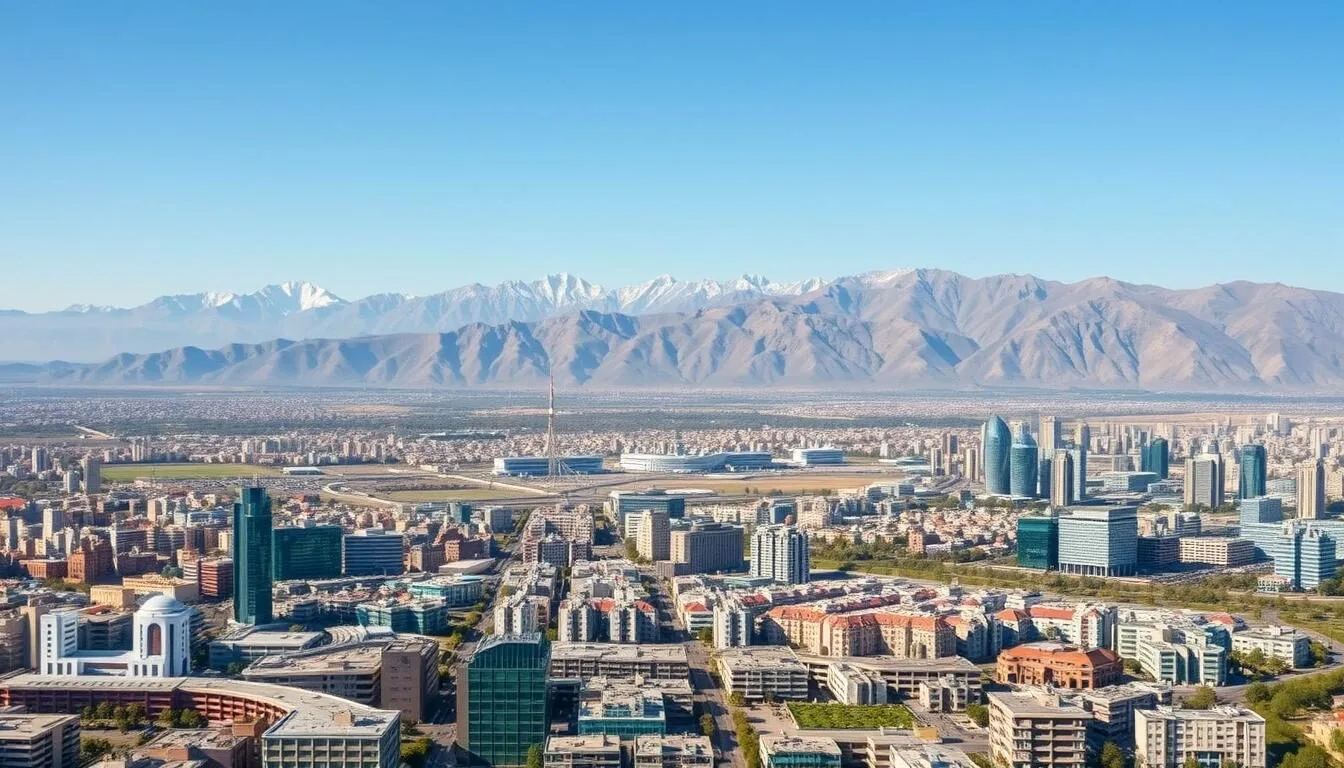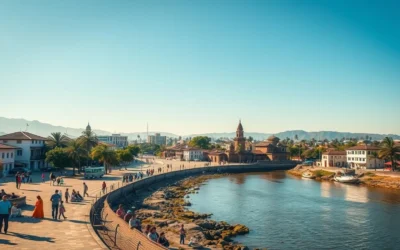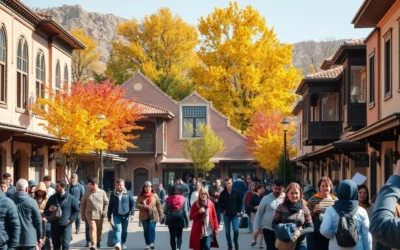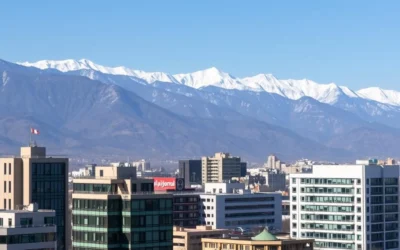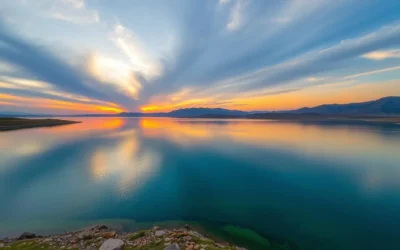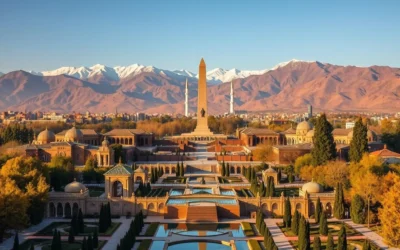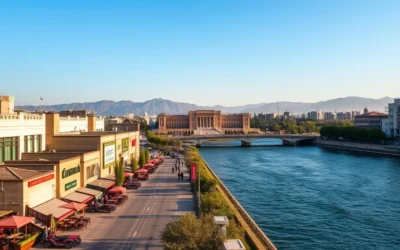✓ Accommodations✓ Flights✓ Rental Cars
Did you know that Tehran sits at an impressive 1,200 meters above sea level, making it one of the highest capital cities in the world? This elevated metropolis offers visitors a fascinating blend of ancient Persian heritage and modern Middle Eastern culture that few travelers fully explore. While many tourists rush through Tehran on their way to Isfahan or Shiraz, those who linger discover a vibrant city where traditional bazaars stand alongside contemporary art galleries, and where the snowcapped Alborz Mountains provide a stunning backdrop to urban life.
Getting to Tehran
Most international visitors arrive at Imam Khomeini International Airport (IKA), located about 30km southwest of the city center. The airport handles flights from major cities across Europe, Asia, and the Middle East, though direct flights from North America are unavailable due to political restrictions.
Ready to Explore Tehran?
Find the best flight deals to Tehran from anywhere in the world. Compare prices across multiple airlines to ensure you get the most affordable option.
Visa Requirements
Most visitors to Iran require a visa, though the process has become simpler in recent years. Many nationalities can obtain a visa on arrival at Tehran’s international airport, provided they have the necessary documentation. This typically includes a confirmed hotel reservation, travel insurance that specifically covers Iran, and sufficient funds for your stay.
Note that citizens of the United States, United Kingdom, and Canada face stricter requirements and must obtain a visa in advance through an authorized Iranian tour operator. These travelers must also be accompanied by a guide throughout their visit. Regardless of your nationality, ensure your passport has at least six months of validity and contains no Israeli stamps or visas.
Important: It’s mandatory to have travel insurance that specifically covers Iran to obtain a visa. Many standard international policies exclude Iran, so verify coverage before traveling.
Best Time to Visit Tehran
Tehran experiences four distinct seasons, with extreme temperature variations throughout the year. The ideal times to visit are spring (April-May) and autumn (September-October) when temperatures are mild and pleasant for sightseeing.
| Season | Months | Temperature | Considerations |
| Spring | April-May | 15-25°C (59-77°F) | Ideal weather, blooming gardens, Nowruz celebrations (March) |
| Summer | June-August | 30-40°C (86-104°F) | Hot and dry, potential air pollution, less crowded |
| Autumn | September-October | 15-25°C (59-77°F) | Pleasant temperatures, clear skies, beautiful foliage |
| Winter | November-March | 0-10°C (32-50°F) | Cold with occasional snow, skiing in nearby mountains |
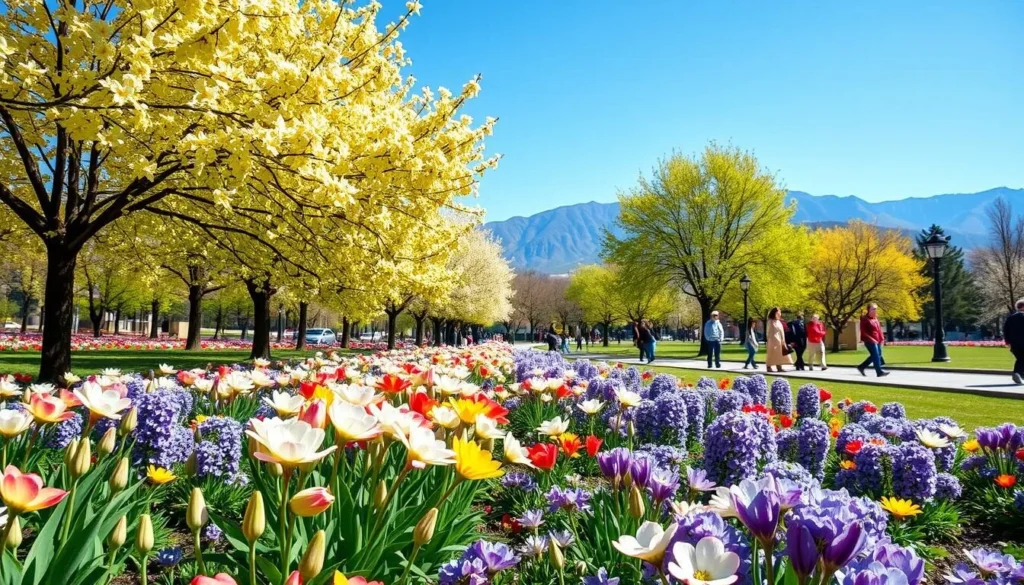
Getting Around Tehran
Tehran is a sprawling metropolis with sometimes chaotic traffic, but the city offers several efficient transportation options for visitors.
Metro System
Tehran’s metro is the quickest and most convenient way to navigate the city. With seven lines covering most major attractions, it’s also incredibly affordable at just 12,000 IRR (approximately $0.25) per journey. Trains run from 5:30 am to 11:00 pm daily. Note that there are women-only carriages at the front and end of each train, which female travelers may prefer during rush hours.
Taxis and Ride-Sharing
Taxis are abundant in Tehran and come in several forms. Yellow taxis can be hailed on the street but don’t use meters, so agree on a price before departing. Ride-sharing apps like Snapp (Iran’s equivalent to Uber) offer a more convenient option with fixed prices, though you’ll need a local SIM card to use them.
Buses
Tehran’s extensive bus network is economical but can be challenging for visitors due to Persian-only signage and crowded conditions. The BRT (Bus Rapid Transit) lines operate in dedicated lanes and are faster than regular buses.
Explore Tehran at Your Own Pace
For maximum flexibility, consider renting a car to explore Tehran and its surrounding areas. Compare prices and book your vehicle in advance.
Local Tip: Purchase a Tehran Metro Card for multiple journeys. The card costs 50,000 IRR and can be topped up at stations, saving you from queuing for single tickets each time.
Where to Stay in Tehran
Tehran’s accommodation options range from budget hostels to luxury hotels, with most concentrated in the central and northern districts. The city is broadly divided between the more traditional, religious south and the modern, cosmopolitan north.
Best Neighborhoods
Central Tehran (District 12)
Perfect for first-time visitors, this area puts you within walking distance of the Grand Bazaar, Golestan Palace, and National Museum. Budget to mid-range options predominate here.
Northern Tehran
The upscale districts of Tajrish, Zafaraniyeh, and Velenjak offer cleaner air, proximity to the mountains, and a more liberal atmosphere. You’ll find luxury hotels and boutique accommodations here.
Enghelab Street Area
Popular with students and budget travelers, this neighborhood near Tehran University offers affordable accommodations and a vibrant intellectual atmosphere.
Recommended Accommodations
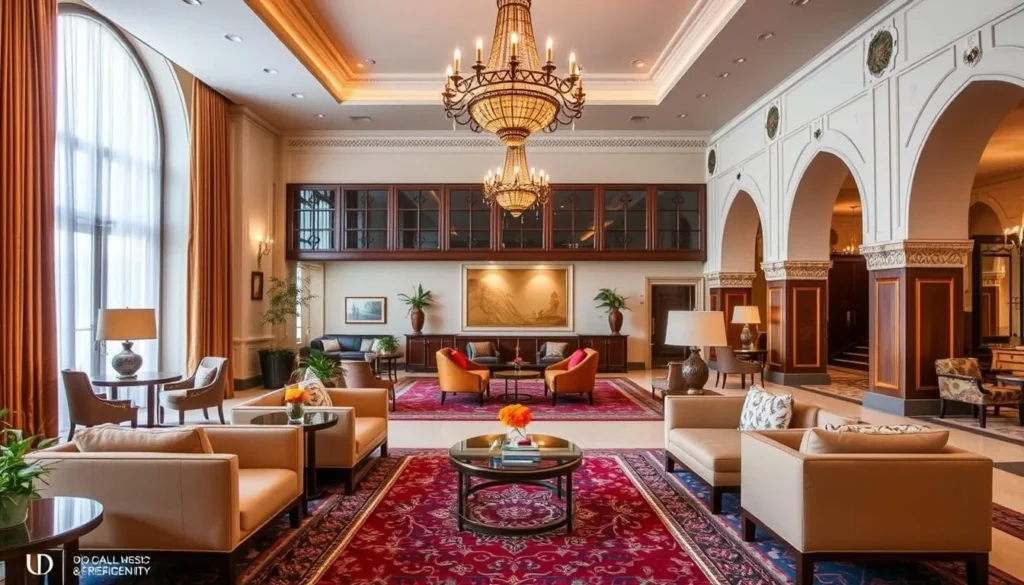
Find Your Perfect Stay in Tehran
From budget-friendly hostels to luxury hotels, find accommodations that match your preferences and budget in Tehran.
Top Things to Do in Tehran, Iran
Tehran offers a fascinating mix of historical sites, museums, natural beauty, and modern attractions. Here are the must-visit places that should be on every traveler’s itinerary.
1. Golestan Palace
This UNESCO World Heritage site is a masterpiece of Persian architecture and one of the oldest historic monuments in Tehran. Built during the Qajar dynasty (18th-19th centuries), the palace complex consists of several magnificent buildings set around a garden. Don’t miss the spectacular Hall of Mirrors (Talar-e Ayeneh), with its dazzling display of intricate mirror work, and the Marble Throne (Takht-e Marmar), an impressive outdoor throne carved from yellow marble.
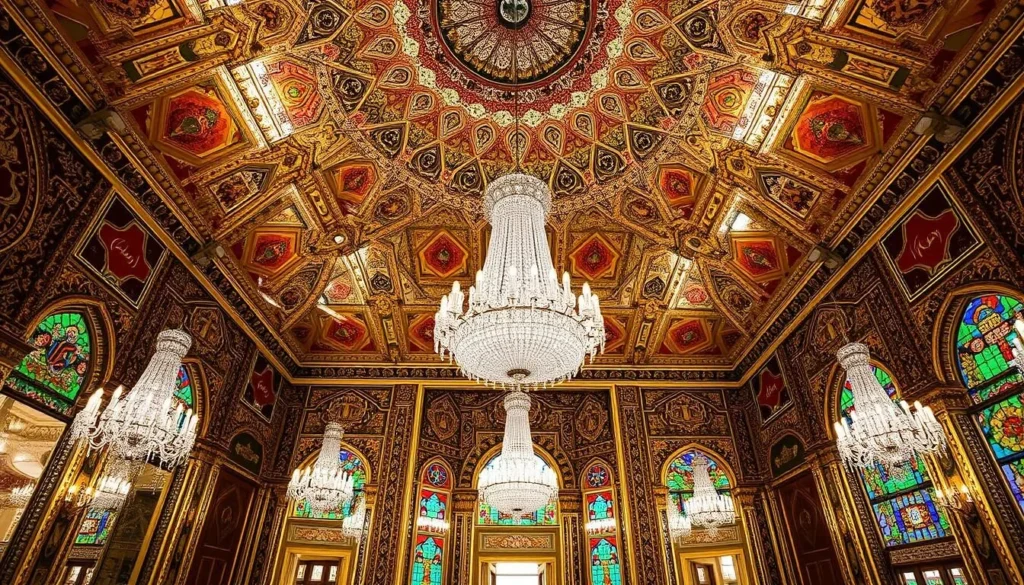
The palace houses several museums displaying royal artifacts, paintings, and gifts from European monarchs. Allow at least 2-3 hours to explore the complex thoroughly. Entrance fees vary for different sections, with foreigners paying around 500,000 IRR for the main palace and additional fees for specialized museums within the complex.
2. Tehran Grand Bazaar
Dating back over 1,000 years, Tehran’s Grand Bazaar is a labyrinthine market spanning over 10 kilometers of covered shops, corridors, and courtyards. This bustling commercial hub offers everything from spices and carpets to gold, electronics, and household goods. Beyond shopping, the bazaar provides a fascinating glimpse into traditional Iranian commerce and social life.
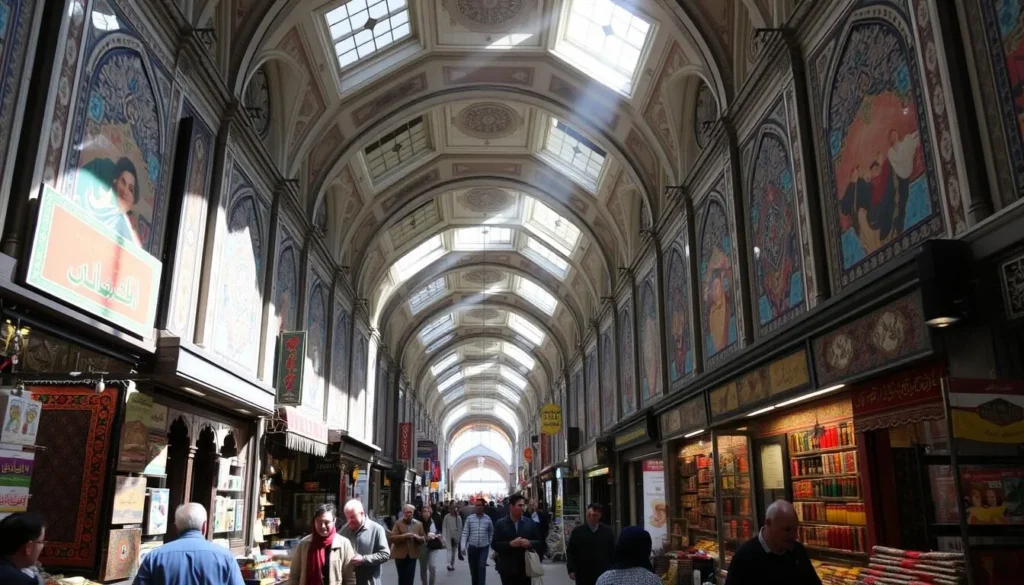
Visit in the morning to avoid the afternoon crowds, and don’t miss the specialized sections like the carpet bazaar (Bazaar-e Farsh) and the spice bazaar with its aromatic displays. Haggling is expected, so offer about half the initial asking price and negotiate from there. The bazaar is closed on Fridays and religious holidays.
3. National Museum of Iran
For a comprehensive overview of Iran’s rich history, visit the National Museum of Iran. The museum houses an impressive collection of archaeological and cultural artifacts spanning thousands of years, from prehistoric times through the Islamic era. Highlights include the Salt Man (a naturally mummified body from the 4th century BCE), Achaemenid stone reliefs, and exquisite Islamic ceramics.
The museum is divided into two buildings: the Museum of Ancient Iran in a striking brick structure inspired by Sassanian architecture, and the Museum of the Islamic Era in a modern building. English descriptions are available for most exhibits, making this an accessible introduction to Iranian history and culture.
4. Tabiat Bridge
For a taste of modern Tehran, visit the award-winning Tabiat Bridge (Nature Bridge). Designed by young Iranian architect Leila Araghian and completed in 2014, this three-level pedestrian bridge spans 270 meters across the Modarres Highway, connecting two public parks. Its innovative design features multiple pathways, seating areas, and restaurants, creating a popular social space for locals.
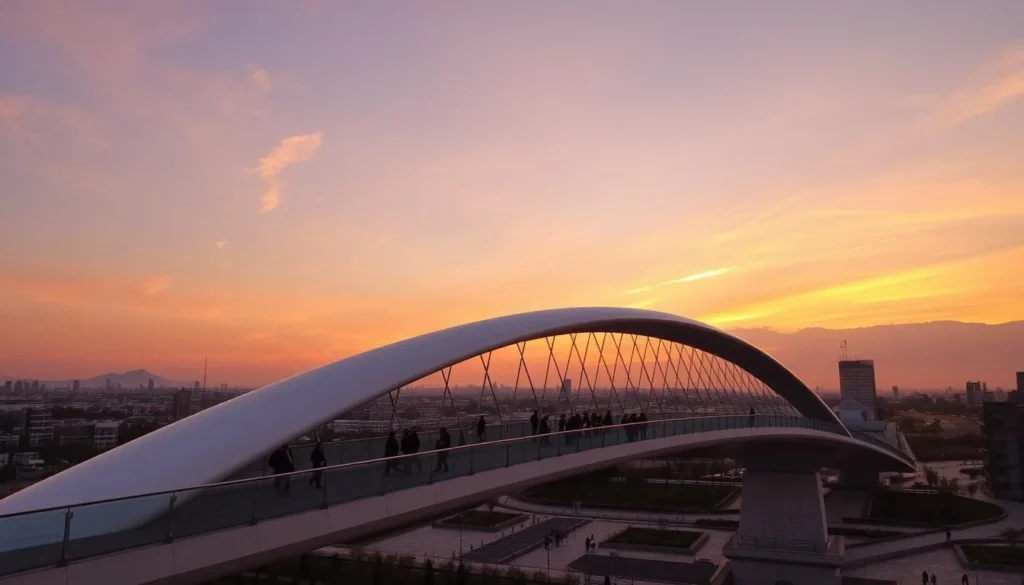
Visit in the evening when the bridge is beautifully illuminated and offers spectacular views of the city lights against the backdrop of the Alborz Mountains. The bridge is particularly popular with young Tehranis, making it an excellent place to observe contemporary urban life.
Explore Tehran’s Top Attractions
Make the most of your time in Tehran with guided tours to the city’s most iconic sites. Skip the lines and gain insights from knowledgeable local guides.
Book Tehran Tours
Museums and Cultural Attractions
Beyond the major landmarks, Tehran boasts numerous specialized museums and cultural sites that offer deeper insights into Iranian history, art, and politics.
Treasury of National Jewels
Located within the Central Bank of Iran, this dazzling museum houses one of the most valuable jewelry collections in the world. The highlights include the 182-carat Darya-ye-Noor (Sea of Light) diamond, the Peacock Throne, and the jewel-encrusted Globe of Jewels. The collection represents centuries of Persian royal acquisitions and provides insight into Iran’s complex history.
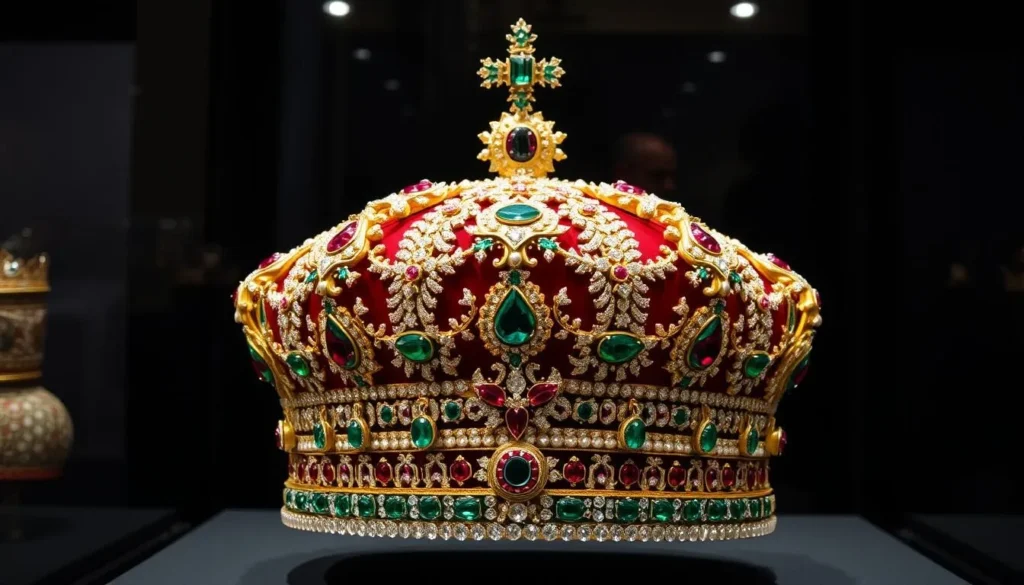
Note that the museum has limited opening hours (Saturday to Tuesday, 14:00-16:30) and photography is prohibited. The entrance fee for foreigners is approximately 200,000 IRR.
Former US Embassy (US Den of Espionage)
For a glimpse into Iran’s revolutionary history and complex relationship with the United States, visit the former US Embassy. Now known as the “US Den of Espionage,” this site gained international notoriety during the 1979 hostage crisis when 52 American diplomats were held for 444 days. Today, it functions as a museum with anti-American exhibits and revolutionary propaganda.
The exterior walls feature striking political murals, while inside you can see preserved spy equipment, classified documents, and exhibits detailing alleged American interference in Iranian affairs. Regardless of your political views, the museum offers a fascinating perspective on a pivotal moment in US-Iran relations.
Tehran Museum of Contemporary Art
Housing one of the most valuable collections of Western modern art outside Europe and North America, this museum is a must-visit for art enthusiasts. The collection includes works by Picasso, Warhol, Pollock, and Monet, acquired before the 1979 revolution, alongside significant pieces by Iranian artists.
The building itself, designed by architect Kamran Diba, is a modernist masterpiece integrating elements of traditional Persian architecture. The museum is located in Laleh Park and charges around 300,000 IRR for foreign visitors.
Natural Attractions and Outdoor Activities
Despite its urban sprawl, Tehran offers surprising access to natural beauty and outdoor recreation, particularly along its northern edge where the city meets the Alborz Mountains.
Darband
At the northernmost point of Tehran, Darband is where the city meets the mountains. This popular recreational area features a scenic hiking trail that follows a mountain stream lined with restaurants, tea houses, and food stalls. The path eventually leads to Mount Tochal for more serious hiking.
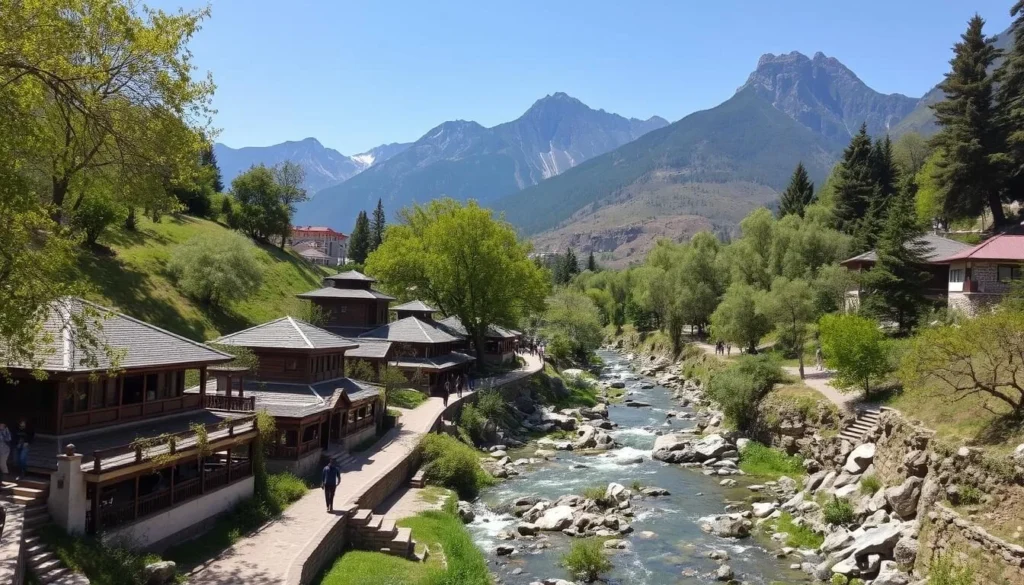
Even if you’re not planning to hike, Darband is worth visiting for its lively atmosphere and delicious food. Try some kebabs at one of the riverside restaurants or sample fresh mulberries and other fruits from local vendors. The area is particularly popular in the evenings when the restaurants are illuminated with colorful lights.
Tochal Telecabin
For spectacular views of Tehran and access to hiking and skiing, take the Tochal telecabin (gondola lift) from the northern suburb of Velenjak. The gondola rises to a height of 3,740 meters over a 7.5-kilometer journey divided into multiple stations.
In winter, the upper station provides access to ski slopes, while summer offers excellent hiking opportunities. Even if you don’t ski or hike, the ride itself provides breathtaking panoramas of Tehran sprawled below. A round-trip ticket costs approximately 1,500,000 IRR for foreigners.
Jamshidieh Park
This beautiful stone garden in northern Tehran offers a peaceful retreat from the city’s hustle and bustle. Featuring traditional Persian garden elements like flowing water, stone paths, and carefully arranged plantings, Jamshidieh provides stunning views of the city below.
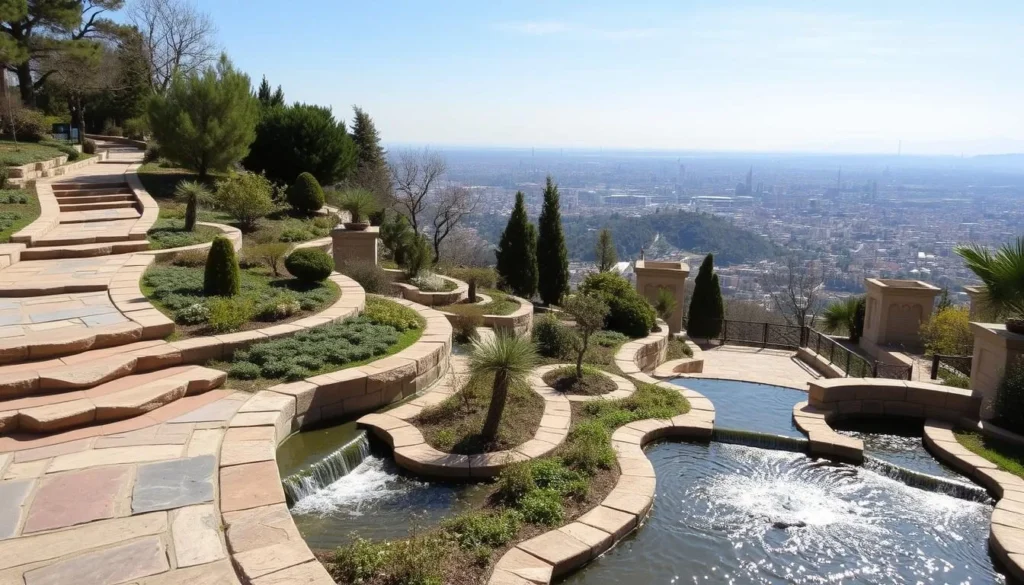
The park is particularly beautiful in autumn when the leaves change color, or in winter after a fresh snowfall. It’s a popular spot for local families on weekends, offering a glimpse into everyday Tehran life.
Food and Dining
Iranian cuisine is renowned for its complex flavors, aromatic herbs, and ancient culinary traditions. Tehran offers everything from street food to fine dining, with options to suit every budget and taste.
Must-Try Dishes

Where to Eat
Traditional Restaurants
For authentic Persian cuisine in historic settings, try Moslem Restaurant near the Grand Bazaar (famous for its tachin), Shamshiri (known for its kebabs), or the elegant Divan Restaurant in northern Tehran.
Street Food
Head to 30 Tir Street in the evening for a vibrant street food scene with vendors selling everything from falafel and jigar (grilled liver) to ash (soup) and fresh juices.
Modern Cafés
Tehran’s café culture is thriving, particularly in northern districts. Sam Café, Café Naderi, and Café Godot offer excellent coffee, pastries, and people-watching opportunities.
Dining Tip: Restaurants typically open for lunch around noon until 3 PM, then reopen for dinner from 7 PM until late. Many places close on Friday mornings (the Islamic holy day).
Shopping in Tehran
From traditional bazaars to modern malls, Tehran offers diverse shopping experiences. Whether you’re looking for Persian carpets, handicrafts, or contemporary fashion, you’ll find plenty of options.
What to Buy
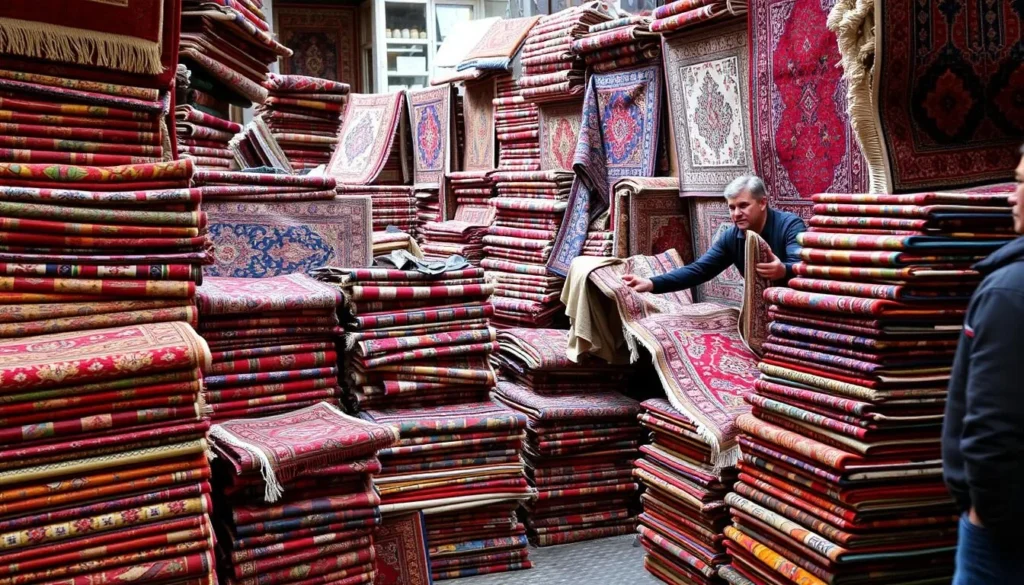
Shopping Venues
Traditional Markets
Beyond the Grand Bazaar, explore Tajrish Bazaar in northern Tehran for a less touristy experience, or visit the Friday Bazaar (Jomeh Bazaar) for antiques and vintage items.
Modern Shopping Centers
Palladium Mall, Sam Center, and Tehran Mall offer international brands, local designers, and entertainment options in more familiar shopping environments.
Specialty Shops
Valiasr Street, Tehran’s longest thoroughfare, is lined with boutiques, bookshops, and specialty stores selling everything from traditional crafts to contemporary Iranian designs.
Shopping Advice: Haggling is expected in bazaars and traditional shops (but not in fixed-price stores). Start by offering 40-50% of the asking price and negotiate from there. Also, be aware that credit cards generally don’t work in Iran due to sanctions, so carry cash.
Practical Tips for Visiting Tehran
Cultural Etiquette
Understanding and respecting local customs will greatly enhance your experience in Tehran:
Money Matters
Due to international sanctions, foreign credit cards don’t work in Iran. You’ll need to bring enough cash (Euros or US Dollars are best) for your entire trip and exchange it locally. Official exchange offices offer better rates than hotels, but the best rates are often found at authorized exchange shops in major commercial areas.
The Iranian currency is the Rial (IRR), though prices are often quoted in Tomans (1 Toman = 10 Rials), which can be confusing. Always clarify which currency is being used when discussing prices.
Internet and Communication
Many popular websites and apps (including Google services, Facebook, Twitter, and YouTube) are blocked in Iran. To access these services, you’ll need a VPN installed on your devices before arrival. For mobile connectivity, purchase a local SIM card from providers like Irancell or MCI at the airport or in city shops (passport required).
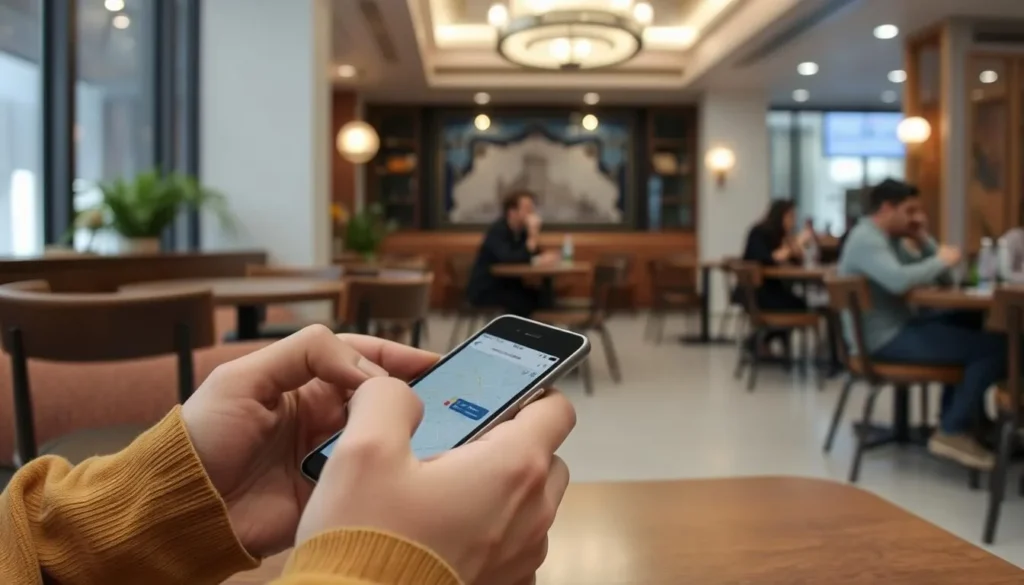
Safety Information
Despite geopolitical tensions, Tehran is generally safe for tourists with low rates of violent crime. The main concerns are petty theft in crowded areas and traffic safety (crossing streets can be challenging due to aggressive driving). Women travelers may experience unwanted attention but rarely face harassment.
Keep a copy of your passport and visa with you at all times, as police occasionally check foreigners’ documents. It’s also advisable to register with your country’s embassy upon arrival.
Prepare for Your Tehran Adventure
Book your accommodations in advance to ensure a smooth start to your Tehran experience. From budget hostels to luxury hotels, find the perfect place to stay.
Day Trips from Tehran
While Tehran offers plenty to explore, several fascinating destinations lie within easy reach of the capital, perfect for day trips:
Tochal Ski Resort
Just north of Tehran in the Alborz Mountains, Tochal offers skiing in winter (typically November to May) and hiking in summer. The telecabin from Velenjak neighborhood makes this an accessible day trip even for non-skiers who just want to enjoy the mountain views.
Qom
About 150km southwest of Tehran, Qom is one of Iran’s most sacred cities and an important center of Shia scholarship. The highlight is the stunning Fatima Masumeh Shrine with its golden dome and intricate mirror work. Buses depart regularly from Tehran’s South Terminal.
Damavand
Mount Damavand, Iran’s highest peak at 5,610 meters, is visible from Tehran on clear days. While summiting requires proper preparation, the foothills offer beautiful hiking opportunities and natural hot springs in areas like Polour and Rineh, accessible by taxi or tour.
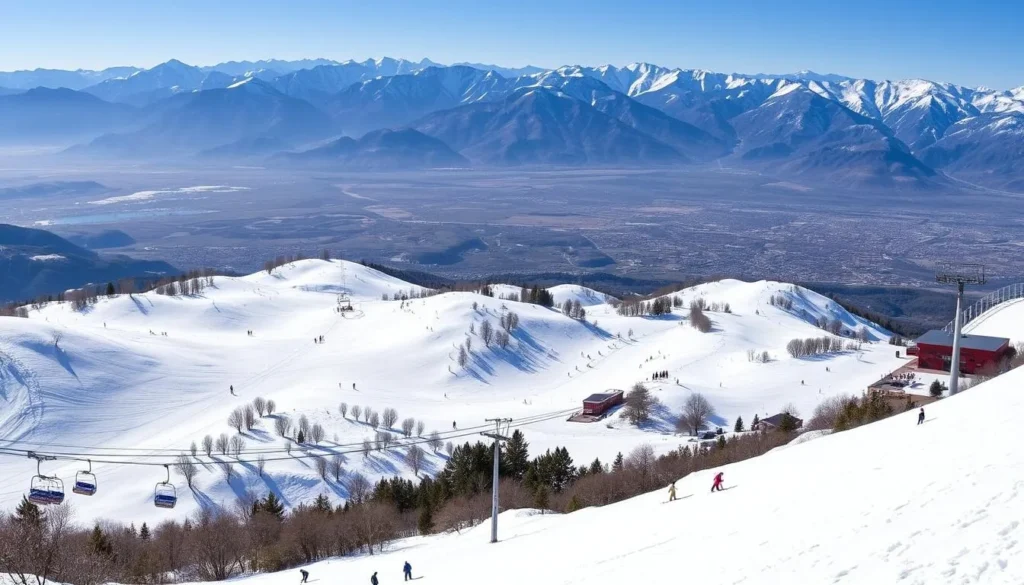
Sample 2-Day Tehran Itinerary
If you have limited time in Tehran, this itinerary helps you experience the city’s highlights efficiently:
Day 1: Historical Tehran
Day 2: Modern Tehran and Cultural Sites
Conclusion
Tehran may not have the immediate charm of Isfahan’s blue-domed mosques or Shiraz’s poetic gardens, but what it lacks in postcard perfection, it makes up for with authentic cultural experiences and a vibrant urban energy. As Iran’s beating heart, Tehran offers visitors a unique window into both the country’s ancient heritage and its contemporary aspirations.
From the opulent halls of Golestan Palace to the modern curves of Tabiat Bridge, from bustling bazaar corridors to tranquil mountain retreats, Tehran rewards those who take the time to explore its many facets. More importantly, it provides an opportunity to connect with everyday Iranians, whose legendary hospitality often leaves the deepest impression on travelers.
Whether you’re drawn by history, culture, cuisine, or simply curiosity about a misunderstood nation, Tehran offers a fascinating introduction to Iran that will likely inspire you to explore more of this remarkable country. The city where tradition and modernity collide awaits your discovery.
Ready to Experience Tehran?
Start planning your journey to this fascinating Persian capital. Find flights, accommodations, and tours to create your perfect Tehran adventure.
—
The above is subject to change.
Check back often to TRAVEL.COM for the latest travel tips and deals.
